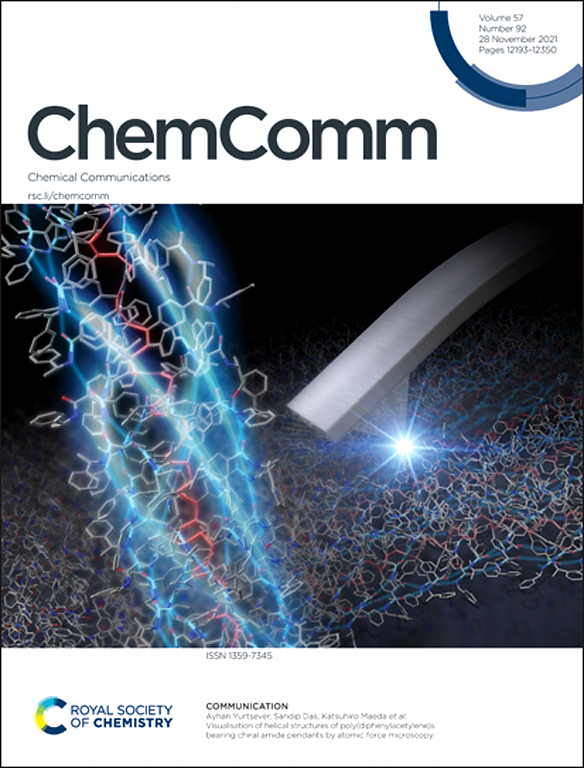基于过渡金属配合物的醇电化学氧化分子催化剂和助催化剂体系。
IF 4.2
2区 化学
Q2 CHEMISTRY, MULTIDISCIPLINARY
引用次数: 0
摘要
分子催化剂通过提供一个离散的活性位点来监测,从而允许对相对于多相系统的潜在机制进行更深入的研究。具有关键中间体知识的机理研究随后能够通过了解如何通过修改催化剂结构来改善反应性或选择性来开发设计原则。氧化还原介质(RM)是一种可以帮助质子和电子转移的小分子,已被证明通过拦截关键中间体来直接反应途径,可以提高许多分子体系中的产物转化率和选择性。大多数分子电催化剂的主要焦点是对还原反应的优化设计,如析氢反应(HER)、氧还原反应(ORR)和二氧化碳还原反应(CO2RR)。相比之下,除了析氧反应(OER)外,分子种类对关键氧化反应的关注要少得多。本文重点介绍了优化的醇类电化学氧化分子催化剂体系。电化学醇氧化反应(AOR)可以在合成增值化学品中发挥作用,并且可以通过从富含能量的分子中释放电来作为CO2RR的对应物。最先进的AOR分子系统分为单位点催化剂和氧化还原介质的共催化系统。AOR是一种与能量相关的反应,概述了该领域,重点介绍了催化剂系统的基础改进,并提出了纳入氧化还原介质的未来发展原则。本文章由计算机程序翻译,如有差异,请以英文原文为准。
Molecular catalyst and co-catalyst systems based on transition metal complexes for the electrochemical oxidation of alcohols
Molecular catalysts allow deeper study of underlying mechanisms relative to heterogeneous systems by offering a discrete active site to monitor. Mechanistic study with knowledge of key intermediates subsequently enables the development of design principles through an understanding of how improved reactivity or selectivity can be achieved through modification of the catalyst structure. The co-catalytic inclusion of redox mediators (RM), which are small molecules that can aid in the transfer of protons and electrons, has been shown to improve product conversion and selectivity in many molecular systems, through intercepting key intermediates to direct reaction pathways. The primary focus for the majority of molecular electrocatalysts has been on optimizing design for reductive reactions, such as the hydrogen evolution reaction (HER), the oxygen reduction reaction (ORR), and the carbon dioxide reduction reaction (CO2RR). By comparison, there has been much less focus on key oxidative reactions by molecular species, apart from the oxygen evolution reaction (OER). The focus of this review is to highlight molecular catalyst systems optimized for the electrochemical oxidation of alcohols. The electrochemical alcohol oxidation reaction (AOR) can serve a role in synthesizing value-added chemicals and can serve as the counterpart to the CO2RR by releasing electricity from energy-rich molecules. State-of-the-art molecular systems for the AOR are divided between single-site catalysts and co-catalytic systems with redox mediators. The AOR is contextualized as an energy relevant reaction, an overview of the area is provided, foundational improvements in catalyst systems are highlighted, and future development principles for incorporating redox mediators are suggested.
求助全文
通过发布文献求助,成功后即可免费获取论文全文。
去求助
来源期刊

Chemical Communications
化学-化学综合
CiteScore
8.60
自引率
4.10%
发文量
2705
审稿时长
1.4 months
期刊介绍:
ChemComm (Chemical Communications) is renowned as the fastest publisher of articles providing information on new avenues of research, drawn from all the world''s major areas of chemical research.
 求助内容:
求助内容: 应助结果提醒方式:
应助结果提醒方式:


